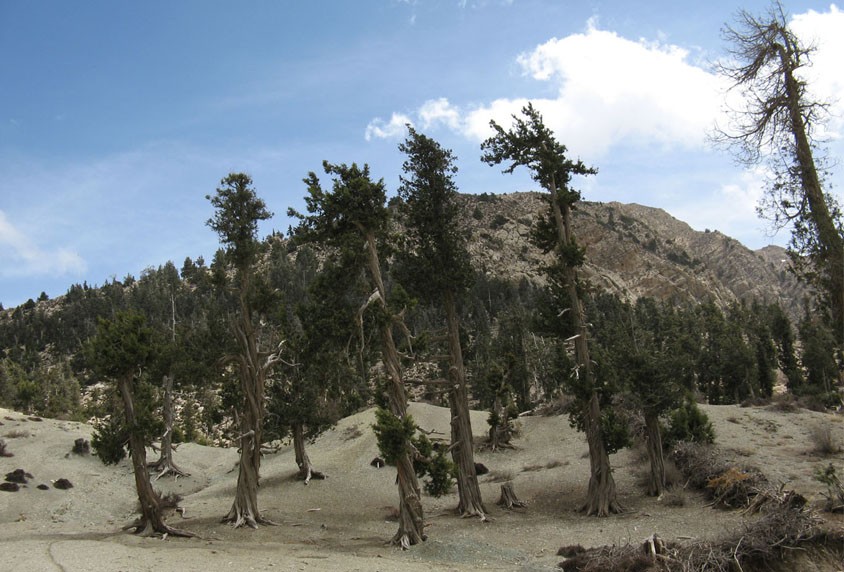
If you are historically- inclined, or an adventurist or a wildlife lover, this province has a thing for you

Last week when I started to write about the tourist spots and other places of interests in Balochistan, I soon realised that it was impossible to cover this beautiful province in the word limit provided by the editor, even though it was a generous one. This is why I had promised a sequel.
So, here it is. But let me admit right off the bat, this too doesn’t cover all there is to see and experience.
Also, one of the beauties of social media is the instant nature of feedback. Two concerns voiced on Twitter were about security. There was also a question about gender-inclusive the general environment was. How does one tackle that? Each place has its own peculiar environment, and ‘outsiders’ are welcomed subject to it. Security is a relative and fluid term.
As far as risks go, potholed roads can be deemed risky, like the one from Dalbandin to Quetta. Terrains, unlike the one you are used to, can be risky, as can dangerous weather with which you cannot cope.
As for being gender-inclusive, allow me to say that one must be mindful that in an expansive area like Balochistan, settlements are most likely to be near sources of water. Water bodies nurture nature around them. These are the reasons tourists flock to spots that dot the entire province. The thing is, as you move deeper into the province where such spots are, near settlements which have limited interaction with people of other areas, of conservative will frown upon the frolicking one otherwise sees at such spots.
Also, while women are hugely respected and generally safe from harassment, they are not visible -- because these communities live cloistered lives. Hence, mixed groups of tourists, especially if they do not have a local connection, are usually frowned upon if they venture too close to the settlements. But if you do have a local connection, the welcome and hospitality you receive will leave a lifelong impression on you.
So, once you are past that, there is so much to see for the religiously-, archaeologically- and historically-inclined as for adventure tourists and wildlife lovers. However, the last-mentioned should be careful to restrict their urge to shoot as this is a land of legendary personalities who have made conservation their life’s mission.
This is not to say there is nothing for those with a penchant for hunting with lethal weapons. They need to acquire the proper licences. They also need to be mindful of the prescribed limits. There are many national parks, protected areas, game reserves and sanctuaries, and also a controlled trophy hunting programme that was introduced by Sardar Naseer Tareen through his Torgar Conservation Project for urial and markhor breeds of wild sheep. The successful model has now been adopted far and wide.
Those interested in the archaeological digs may experience some difficulty as these areas are located in remote, difficult to access areas. Other than the ones mentioned in Part 1 of this series, some other renowned sites are: Perino Ghundai (5500 BC), Mughul Ghundai (5500 BC) in Zhob, Mughul Ghundai in Loralai (5500 BC) and Dabar Kot (2600 BC) in Duki. These are in desolate places that tourists can access only with the help of proper guides.
How can one not mention Quetta, the capital of Balochistan, and areas surrounding it? Nestled in the middle of the cup-shaped valley, landing in Quetta is not for the faint-hearted.
After suffering complete devastation in the 1935 earthquake, the garrison town was rebuilt by the British. It has now grown into a bustling urban centre, almost bursting at its seams due to the influx of people from other parts of the province, as well as those who were displaced during the Afghan War in 1980s.
Quetta is an experience in itself. It is connected by road to Karachi as well as Islamabad. Both highways offer stunning natural scenery. A travel crosses mountains and passes, lush green orchards and fields from Quetta to Islamabad via Zhob. On the way, one can see the British-era Sandeman Castle and the overhanging railway bridge at Chaper Rift.
Making Quetta a base camp, one can venture to Hanna Lake, an articficial water reservoir built to address water shortage in the Quetta valley due to over extraction. It is located in the Urak valley, also known for its fruit orchards, especially of apples, and bee farming, the products of which were a special attraction for the visitors.
Then there is the beautiful Ziarat valley that offers both nature and history. It houses the Residency where the founder of Pakistan, Quaid-i-Azam Mohammad Ali Jinnah spent his last days, and miles upon miles of magnificent Juniper trees that grow in its five valleys whose vistas are a tourists delight, irrespective of whether they brave a snowy wintery tour or go there during the summers, which, given its high altitude, are still quite cold for visitors from the plains. Winter gear and sturdy shoes are needed when even planning a summer trip there.
Passing through the forests spread over the mountains around the five valleys, one inhales the heady fragrance of wild lavender. Like Harboi mentioned earlier, Ziarat forests are home to many medicinal plants. The uniqueness of the Juniper forests, one of the oldest in the world, has given it a special place. It has been declared a Biosphere Reserve by UNESCO in recognition of its uniqueness.
Again, no amount of column space is enough to do justice to the hidden beauty of Balochistan’s vast expanse that is endowed with nature’s blessings. It is up to the adventurous to undertake a journey of discovery, and share their experiences with others.